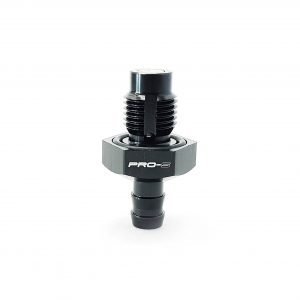Check Valves
- Check Valves
PRO-S One Way AN to AN Check Valve
€36.53 – €57.95 Ex. VAT Select options This product has multiple variants. The options may be chosen on the product page
When is it time to replace your fuel pump check valve?
Now, check valves in cars are usually connected to the fuel pump. However, this component was manufactured for cars before there was such thing as electronic injection. Nowadays, fuel pump check valves are normally used in retrofitting the mechanical fuel pumps in vintage or classic cars. Because a mechanical fuel pump makes use of two-port check valve, one is situated at the inlet, and the other at the outlet. From the fuel pump, the check valve ensures that the flow of fuel goes in the proper direction while maintaining a stabilized pressure to keep the engine running.
However, because of wear and tear, the check valve may need to be replaced as needed. If not, you’ll most probably start experiencing these symptoms:
Difficulty starting car
When the check valve has gone bad, the vehicle will have no ignition and will not start. Usually, to build up enough pressure to get it running again will require you to turn the key right before starting, and repeating this numerous times until it starts.
Vehicle runs poorly
When there is not enough pressure sustained, the vehicle will run badly or even stall. This is because a faulty check valve will not be able to retain the suitable amount of pressure. To check if the amount of fuel pressure is in line with your vehicle’s specifications, you may use a fuel pressure gauge when the vehicle is running. And when you find that the fuel pressure is not up to par with what is specified, then the problem may lie with the check valve.
Vehicle stalls
When the vehicle starts properly but then stalls once the fuel pump turns off, then the check valve may also be at fault. A bad valve will translate to a lack of pressure wherein the fuel flows back into the pump.




